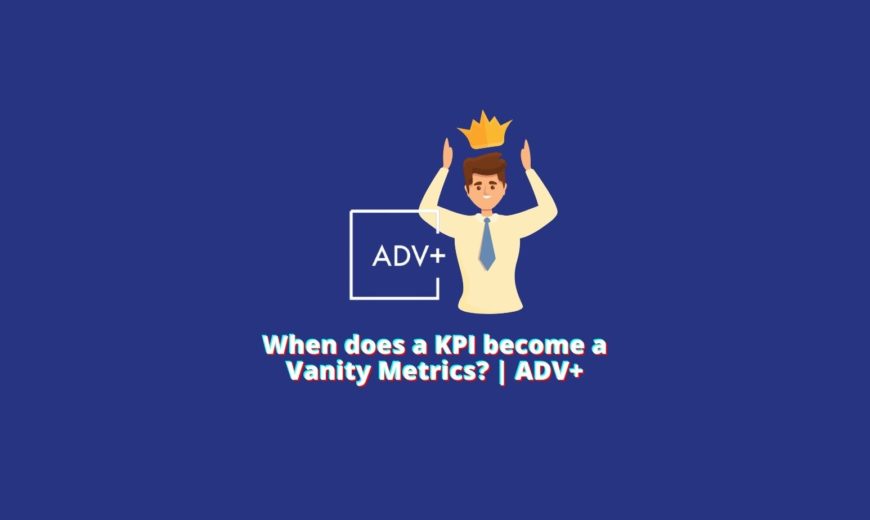
There is a precise moment when the data you normally use to track your business turns into Vanity Metrics.
It is the moment when the data becomes just a number, more useful to satisfy the desire for appearance than to provide concrete information about your business.
They are metrics for their own, which can help to make a good impression on the others but do not return anything in terms of usefulness for future digital strategies.
This is why it’s important to recognize when a metric becomes pure vanity. That will help you to realign the objectives accordingly to restore value and usefulness to your data.
Vanity Metrics on Social Media: Does the number of followers still matter?
One of the Vanity Metrics is certainly the number of followers on Social Media. That data in some cases risks becoming a real obsession for many entrepreneurs.
There are already several recent opinions that the number of followers would no longer be such a significant metric.
While it is true on the one hand that at first glance this data can help communicate greater credibility by potential customers, it is also true that not always having more followers automatically means “selling more” or “reaching more people”.
Profiles with hundreds of thousands of followers can actually suffer from a very low level of interaction (which could also suggest a fraudulent purchase of the same). Or, even with a good engagement rate there could still be few sales, a sign of some gaps in customer journey planning.
At the same time, we can’t deny that the larger the starting follower base is, the more the right conditions there will be to create an interested community.
How to interpret Likes, comments, shares
Even Likes, Comments and Shares can turn into Vanity Metrics if not analyzed to study the level of engagement of our users.
A handful of likes makes no difference; many likes on one post compared to another may suggest that that type of content was appreciated more and managed to engage the audience more effectively. The same goes for comments and shares that require even more decisive action on the part of users.
It is no coincidence that Likes, comments and shares are often considered in the total and for the calculation of the Engagement Rate in relation to the number of Impressions or the total number of followers. +
Furthermore, Instagram has recently given users the possibility to obscure the number of likes on posts, a sign that this metric in itself only risks creating more anxiety in the content creation process.

How to prevent data from turning into Vanity Metrics?
1. Define your business objectives carefully
Any kind of data, not just those mentioned, risks turning into a Vanity Metrics if not adequately set in the context of the objectives for your business.
Take the time to thoroughly clarify what goals you intend to achieve with your marketing strategy.
Brand awareness? Engagement? Conversions?
2. Select the right KPIs accordingly
If your goal is to increase Brand Awareness and broaden your target audience, it is reasonable to consider the number of followers as a significant data. Similarly, if the goal is to increase Engagement, user participation is certainly important. Conversely, if the intention is to increase sales, these data do not add any interesting information to the picture of interest.
This step already helps you to reduce the possibility of considering irrelevant data at a strategic level or to choose some metrics only for the value of appearance without a real implication in terms of ROI.
3. Always consider complementary data to your Vanity Metrics
Whatever the selected KPIs, consider that there are always valid alternatives or complementary data to consider, to get a more realistic picture of the situation.
For example, to analyze the traffic on your site do not stop at Page Views: also consider the Bounce Rate, the number of Sessions, the Average Time spent on a page or the number of Pages viewed per Session.
In summary…
- The Vanity Metrics are decontextualized metrics, detached from strategic reasoning that only serve to satisfy our digital ego
- They are the opposite of Actionable Metrics because they are not useful in making decisions to grow your business
- The number of followers on social media is a excellent example of Vanity Metric but any data can become a mirror for vanity
- To avoid Vanity Metrics: focus on goals and choose the right KPIs accordingly and always consider complementary data to have a more realistic and effective overview
Continue to follow our Blog for more tips and suggestion about your Digital Strategy!



